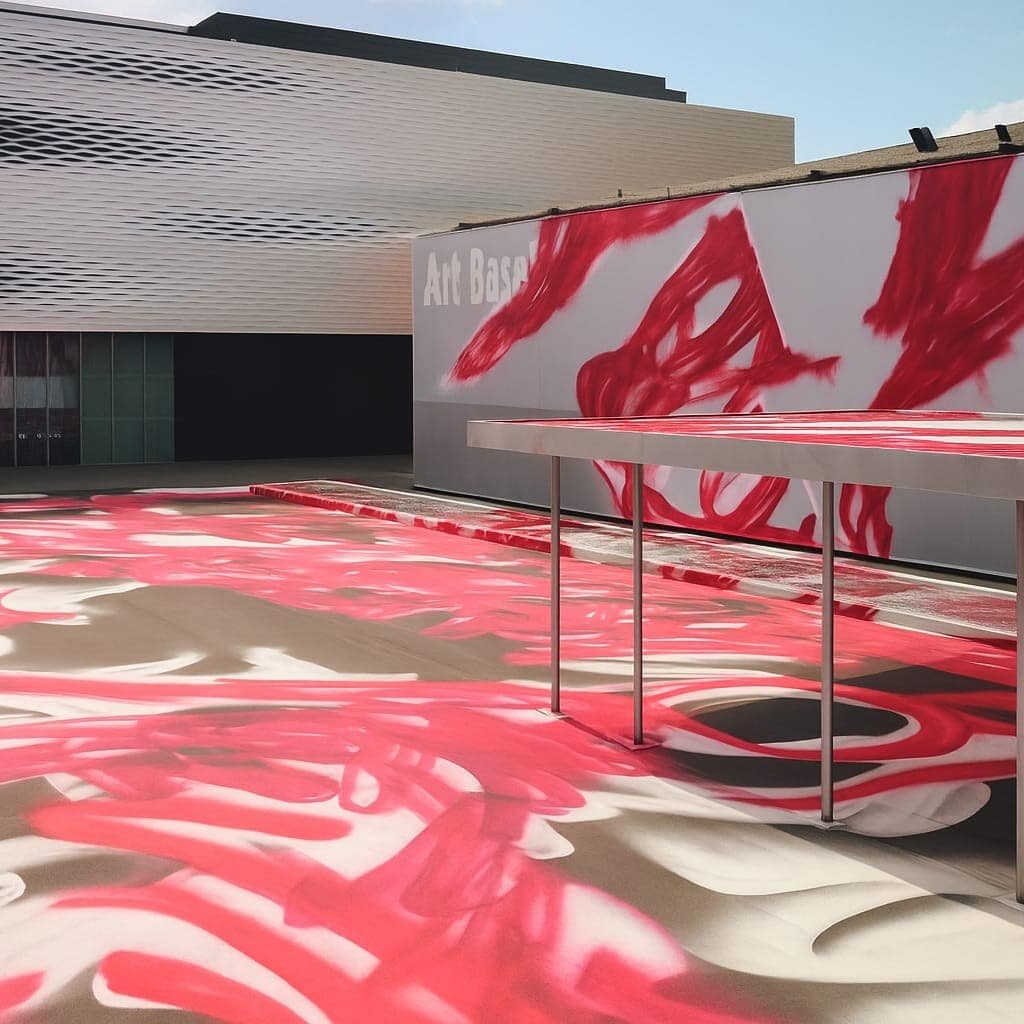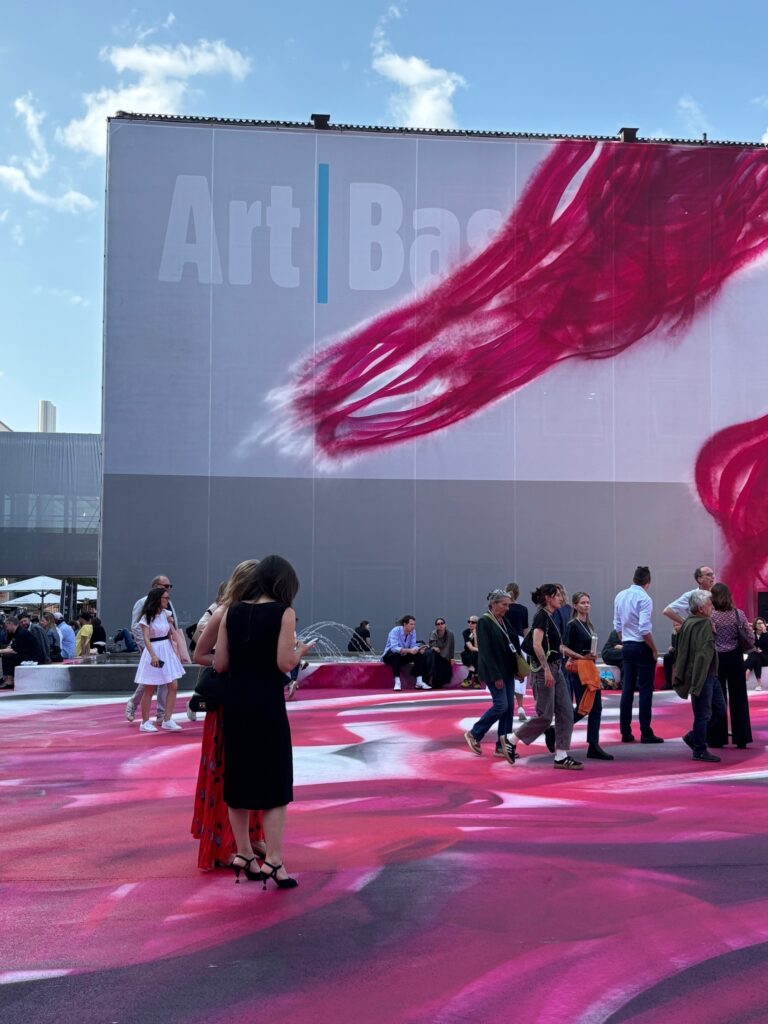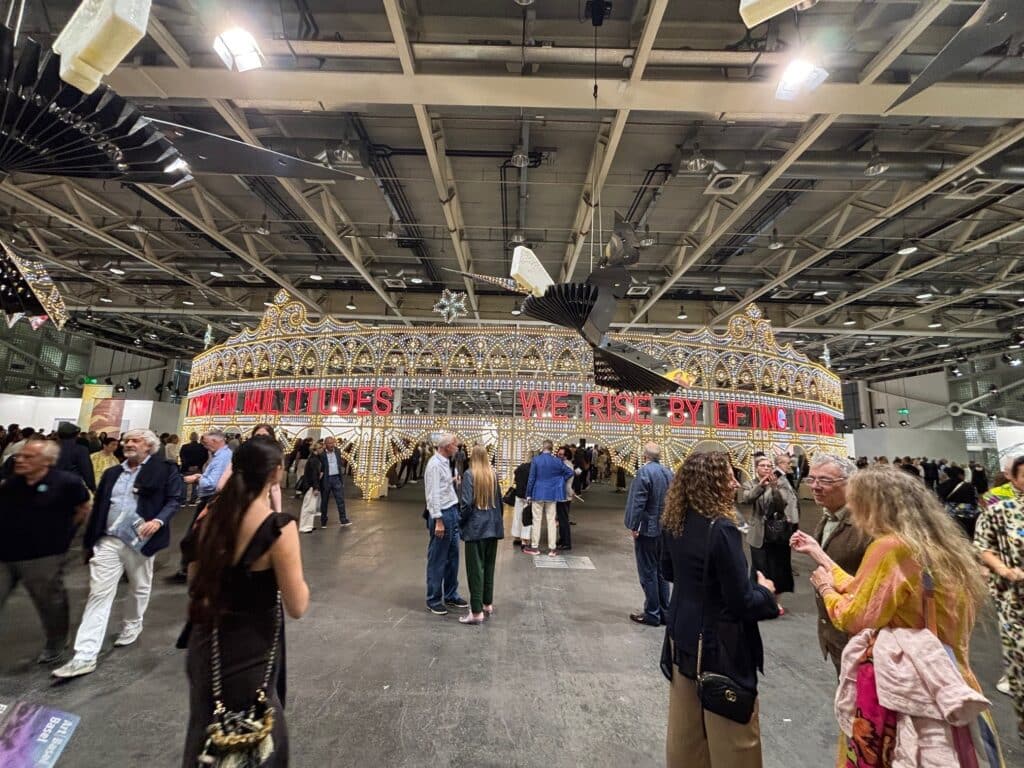Art Basel 2025 opened with a visual jolt: Katharina Grosse’s monumental installation CHOIR transformed Messeplatz into a walk-in painting of white and magenta. Spanning 5,000 square meters, the work extended across façades, pavements, and sculptural forms, sprayed in Grosse’s signature pigments. Visitors didn’t just enter the fair — they stepped into a performative field of color. “Transient and unrepeatable,” she called it.
Meet the artists | Katharina Grosse
Inside Unlimited, the tone was set by Marinella Senatore’s glowing arena We Rise by Lifting Others — a circular light sculpture that welcomed fairgoers like a radiant circus ring. Nearby, Joep van Lieshout’s March to Utopia dominated the hall: 90 by 15 meters of mobile, modular sculpture evoking migration, decay, and dystopian hope. It was both overwhelming and oddly playful.
Among the most talked-about works:
- Walid Raad’s Sweet Talk: Commissions (Beirut): A hypnotic video loop chronicling the destruction and reconstruction of post-war Beirut.
- Danh Vo’s In God We Trust: A sculptural deconstruction of the original 1777 U.S. flag — its wooden stripes intended for burning, leaving only steel stars.
- Mira Schor’s Sexual Pleasure (1998): A bold feminist painting blending color, language, and conceptual punch.
At the main fair, 289 galleries from 40 countries created a balanced, focused atmosphere. Top sales signaled confidence at the upper end:
- David Hockney’s Mid November Tunnel ($13–17 Mio.)
- Ruth Asawa’s 1955 sculpture ($9,5 Mio.)
- Gerhard Richter ($6,8 Mio.)
- Mark Bradford (2 works at $3,5 Mio. each)
- Agnes Martin (over $4 Mio.)
The real momentum unfolded in the mid-market range: works priced between $20,000 and $200,000 moved steadily — particularly editions, drawings, and sculpture. The weaker dollar made acquisitions more attractive, especially for European buyers. Many booths curated smart pairings: established voices like Gerhard Richter, René Magritte, or Agnes Martin shown alongside contemporary positions such as Tavares Strachan, Anri Sala, Julie Mehretu, and Julian Charrière. Sculpture remained a visual anchor throughout the fair — Ruth Asawa, Louise Bourgeois, Marina Simnett, and Maurizio Cattelan drew constant attention.
Beyond the booths, Basel expanded into the city.
The Basel Social Club, just a short tram ride away, offered art in a garden setting — between trees, DJ sets, and natural wine. Once underground, now essential.
In town, Parcours, curated by Stefanie Hessler (Swiss Institute NY), brought art into Clarastrasse and the urban fabric under the theme Second Nature — clever, accessible, and made for social sharing.
Museally speaking: Vija Celmins at Fondation Beyeler and Julian Charrière at Museum Tinguely rounded out a city humming with artistic intelligence.
Basel 2025 showed us: serious collecting happens where curiosity meets context.ts heart, entrepreneurship is just that; finding commercial solutions for commercial problems, quickly and succinctly, over and over again.


